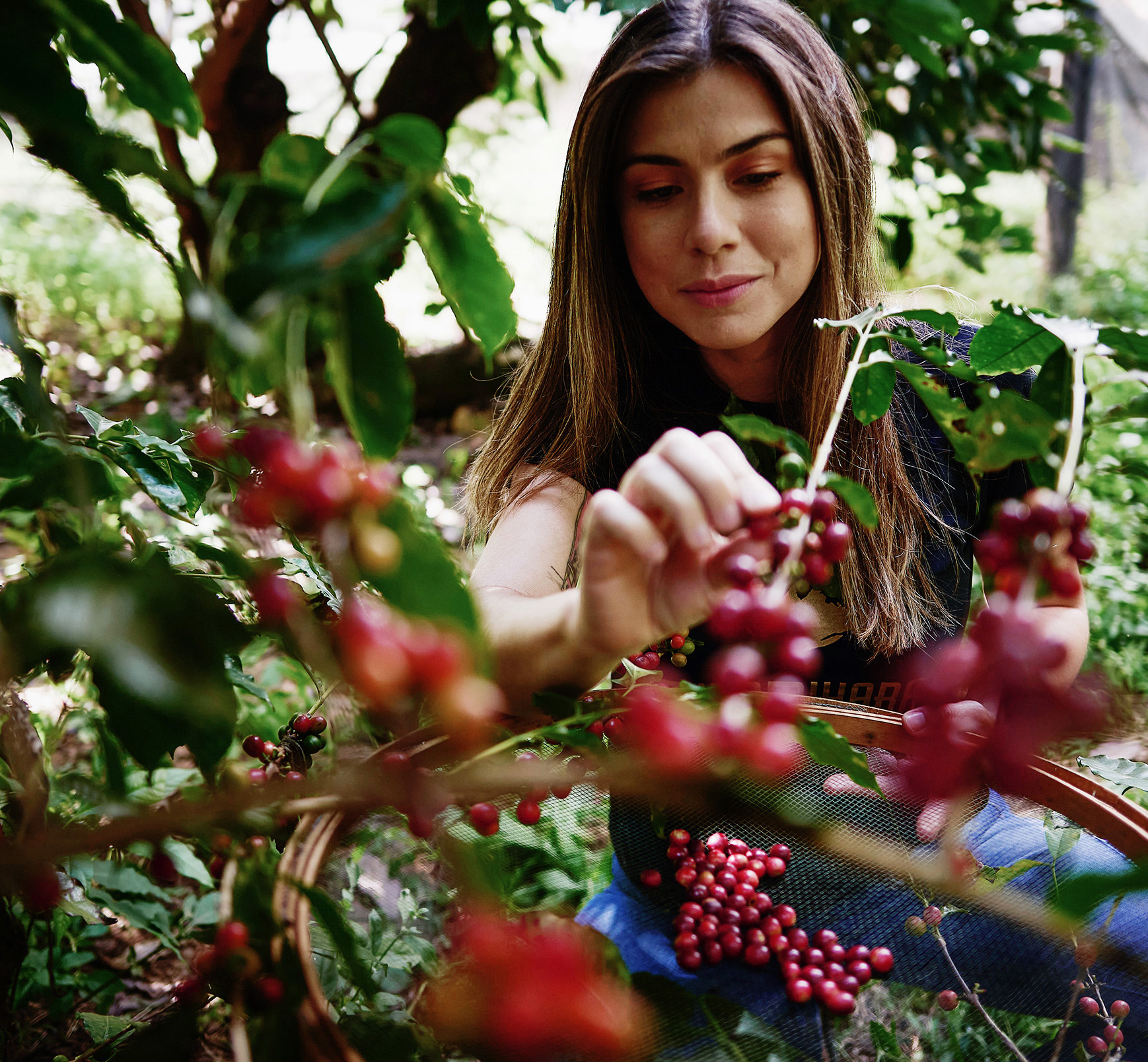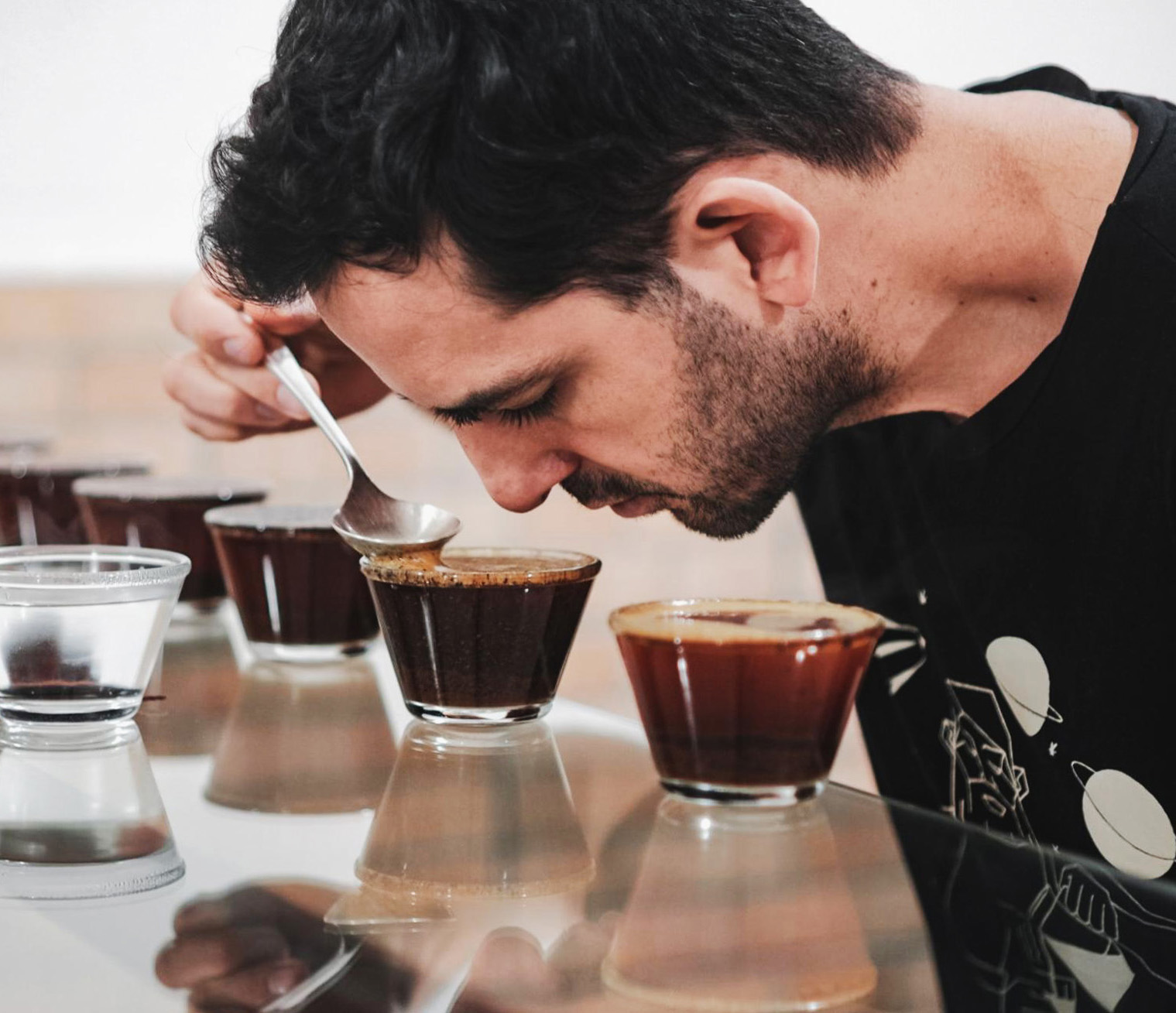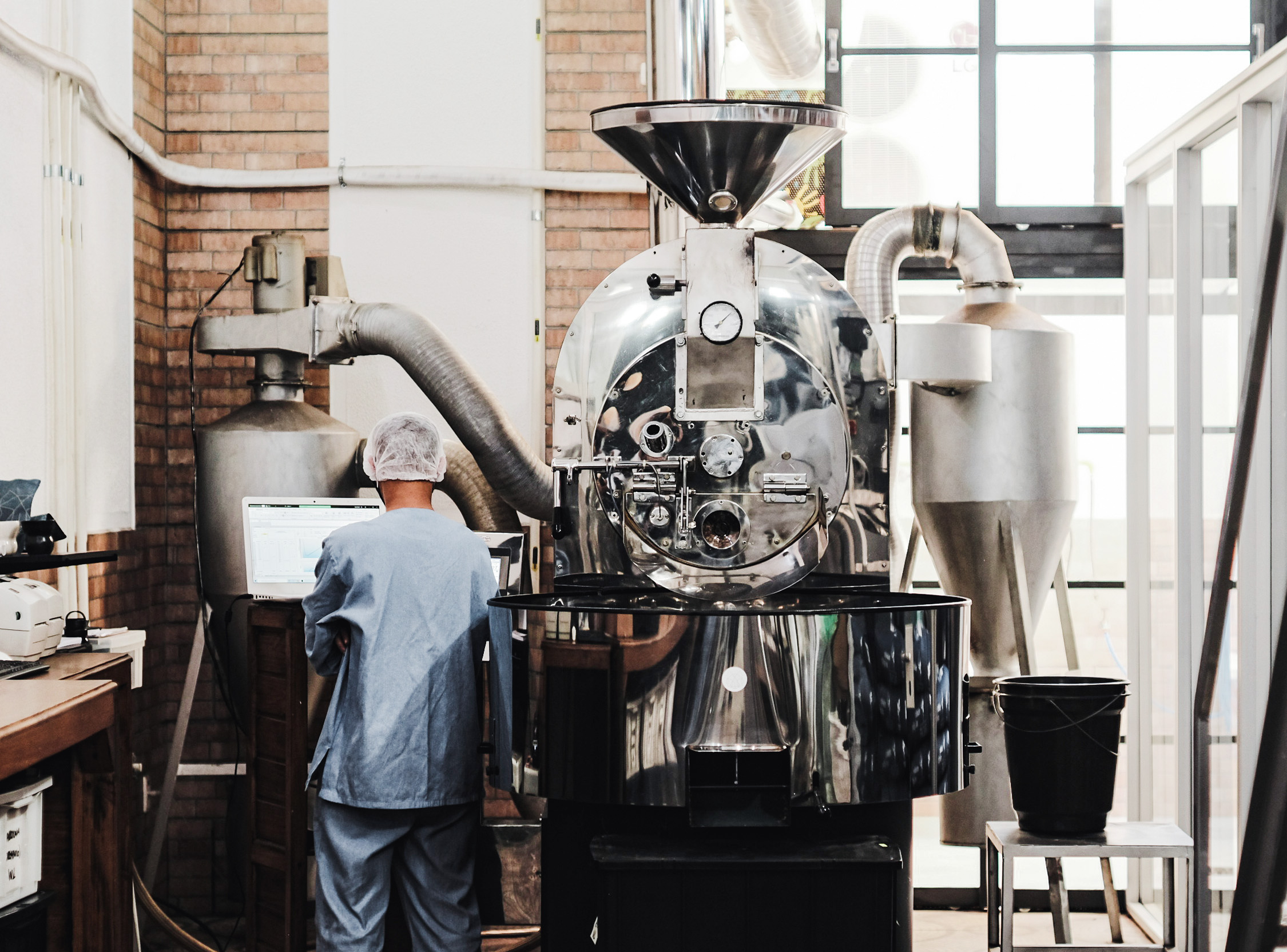This week we are bringing our epic Coffee Buyer’s Guide to Brazil to an end. Writing this course has been an eye-opening experience. Brazil is by far the biggest and best-known coffee producer in the world, and yet there is so much about the country that is not well known to roasters and baristas alike.
We began the course with a journey round the different growing regions of Brazil, and learned that there were many more identifiable microclimates in the country than we had realised. We then delved into the major varieties grown in the country, and discovered how important the work of Brazilian growers and scientists has been to coffee producers all over the world. Along the way, we also learned the real difference between conilon and robusta. Finally, we dropped in some important reference materials for buyers, including, to the best of our knowledge, the only guide to the Brazil classification system for grading green coffee published in English.1
For the final lessons of the course, we wanted to tackle perhaps the most important questions for roasters and baristas: How do you find the best Brazilian coffee, and how should you approach roasting and brewing that coffee to get the best flavours from it?
To get an insider’s perspective on this, we spoke to two prominent roasters and baristas in Brazil: the 2019 Brazil Barista Champion (and WBC semifinalist) Martha Grill; and Hugo Wolff, the founder of Wolff Café, one of Brazil’s foremost specialty coffee roasters.
 2019 Brazilian Barista Champion Martha Grill, picking coffee at the Minamihara farm
2019 Brazilian Barista Champion Martha Grill, picking coffee at the Minamihara farm
Martha Grill initially trained as an actress, and fell into the coffee industry by chance. Within less than a year she had begun competing, taking second place in the Brazilian Barista championships on her first attempt in 2017, and then taking the title two years later. Last year she began working at Minamihara, a farm in Alta Mogiana, where she runs the ‘seed to cup’ projects, which include coffee roasting, agrotourism experiences, and barista training.
Hugo Wolff began his coffee career as a producer, setting up a coffee farm after serving nearly a decade in the Brazilian navy. He produced specialty-grade coffees from his very first harvest, and in the following years he became a Q grader and established the on-site roastery that became Wolff Café. In 2015, Hugo left the farm behind and relocated the roasting business to São Paulo, becoming one of Brazil’s best-known roasters.
 Hugo Wolff, founder of Wolff Café at the cupping table
Hugo Wolff, founder of Wolff Café at the cupping table
How Important is Terroir?
Our catalogue of Brazil’s growing regions highlights just how huge the country is, and how many different terroirs can be found there. Finding the best coffees in Brazil, therefore, starts with broadening your expectations. ‘Coffee roasters should start looking for a different flavour profile than what they conceive as “Brazil”,’ Martha says. ‘There are a lot of different terroirs — and also species, varieties and processes.’
At present, most of the best Brazilian coffees come from a limited number of regions, Hugo says. ‘The exceptional origins that deserve recognition on the international scene are still few.’ The situation is changing, however. ‘Increasingly, roasters will be surprised by Brazil,’ he says. ‘I am sure that in the future we will be recognized more for the quality than just for volume.’
One striking feature of Brazil’s growing regions is the large number of protected geographical indications, either Denominação de Origem (DO) or Indicação de Procedência (IP). These have been valuable in promoting the efforts of regional grower’s associations to improve the quality of their coffee, and bringing them to the attention of a wider market.
The rapid growth in Brazil’s Geographical Indications (GIs) is a relatively recent phenomenon — the law establishing GIs was passed in 1997, yet more than a quarter of Brazil’s GIs were granted from 2020 onwards. The Indicação de Procedência designation, unlike the DO, doesn’t require the product to have any particular features that derive from the terroir — just that the area has an established reputation for producing that product. (Revista Pesquisa 2021).
A geographical indication doesn’t necessarily guarantee high-quality specialty coffee: for example, the IP for Região de Pinhal specifies a minimum quality score of 75 points for naturals and 80 points for washed or pulped natural coffees (Rappa 2016). In Espírito Santo, meanwhile, the DO for Montanhas do Espírito Santo Espírito does not specify any quality requirement at all (INPI 2021) — and conilon of a certain standard, grown anywhere in the state, is eligible for an IP designation (SAFRA 2021).
Some geographical indications also make claims about the sustainability of the product, but these claims are not always robust. The Matas de Rondônia DO, in a region of the Amazon subject to high rates of deforestation, promotes Robusta production in the state as high quality and sustainable — yet the DO does not specify what is considered ‘sustainable’ nor what actions producers should take to be included (INPI 2021).
The introduction of agroforestry techniques to grow coffee in threatened areas of rainforest could protect against deforestation (Zanon 2021), but in general coffee growing has put severe deforestation pressure on tropical forests (Watson and Achinelli 2008). Furthermore, the Matas de Rondônia DO specifies that the Robusta coffee it certifies should reach ‘80 points according to the methodology of the SCA’ (INPI 2021), but SCA methodology does not apply to Robusta coffees.
This suggests that there is plenty of room for GIs to be defined more rigorously. Including stricter definitions of the quality and techniques that define the GI, as well as just the geographical locations that it covers, will surely help GIs become more widely recognised in the specialty market.
Despite the importance placed on terroir by most of the specialty industry, Hugo believes that which microregion that the coffee is grown in is not as important as it used to be in Brazil. According to Hugo,
‘[Brazilian coffee] quality is much more a question of post-harvest than of region’.
Instead, what determines the quality of the coffee from a region is whether the producers have the knowledge needed to produce quality, and if they can find a market for their top lots, he suggests.
Martha also emphasises the importance of the techniques used on the farm in determining the characteristics of the coffee. At Minamihara, they don’t wash the cherries or induce fermentation, but only produce naturals, in order to preserve the characteristic microflora of their terroir. ‘These farm management and post harvest techniques end up in coffees with a higher density, longer shelf life and a very unique flavour profile,’ she says. She emphasises that roasters should not just look for new growing regions, but should also look for different profiles within the regions they already know.
The Value of Relationships
Building direct connections to producers can help buyers find the best coffees, and also ensure that the working relationship is beneficial to the producer. ‘The buyer has the power to choose what they are going to consume, and they can make the effort to know their suppliers better,’ Martha says.
‘We’re all part of the specialty coffee community, and the values of this chain are quality, sustainability, and traceability — but we also know that there is a lot of misleading advertising in this chain. So why not overcome these barriers and make agreements directly with the producers?’
Building direct relationships with producers have helped Wolff maintain access to good quality coffee, even when market conditions become challenging. ‘We are unable to compete with foreign buyers and their strong currencies within Brazil,’ he says. Hugo’s approach has been to share his knowledge as a former grower with the farmers he works with, to help expand the pool of specialty producers. ‘We have to train more and more new producers, so that there is no shortage of quality coffee for any buyer, whether from within Brazil or abroad,’ he says.
 The Wolff Café roastery, one of the best-known specialty coffee companies in Brazil
The Wolff Café roastery, one of the best-known specialty coffee companies in Brazil
He encourages baristas and roasters to travel Brazil, to build relationships but also to share their knowledge of specialty coffee. ‘We have a lot to learn from you! Please visit Brazil … with the aim of getting to know Brazilian baristas, roasters, and producers,’ he says. ‘We like to learn, and welcome all foreigners — and baristas are especially welcome! Come!’
The Perfect Recipe
Getting the best results from Brazilian coffee, both as a roaster and a barista, requires letting go of your expectations and not expecting all Brazilian coffees to behave the same way, Martha says. ‘It’s simplistic to talk about “Brazilian coffee” as if it’s just one nutty, low density, full bodied thing.’
Roasters in other countries often miss some of the possibilities inherent in Brazilian coffee. ‘Even though most of the best [green] coffees are still exported, in my opinion the best place to try Brazilian coffees is over here’. Martha suggests,
‘Roasters around the globe try to find classic characteristics in Brazilian coffees, instead of allowing themselves to be surprised … while the Brazilian roasters investigate all the potential hidden inside those beans’.
For baristas making espresso with Brazilian coffees, Martha again recommends keeping an open mind when trying out recipes. ‘When I started to work with Minamihara’s coffee I was surprised that most of the standards that we have for coffee extractions didn’t work with it. So I needed to create new ones,’ she says.
She had a similar experience preparing for the World Barista Championship, when she found that she got the best flavours from her coffee with espresso shots running in less than 20 seconds. Based on this experience, she suggests that to get the most out of Brazilian coffee, baristas should not limit themselves by looking for only the flavours they expect to find.
Whatever coffee you have to work with, Hugo also implores baristas to give it the attention it deserves, saying: ‘When you use a coffee from Brazil, know that the quality of this coffee is the result of a lot of dedication and love for our land.’ By treating Brazilian coffees as individual, baristas can help bring out the different flavours that Brazil is not yet well-known for. ‘We need the help of you, baristas from all over the world, to be recognized as a country that produces quality, and deserves to earn a price that makes it worth staying in the countryside,’ Hugo says.
Making the best Brazil espresso, therefore, means truly understanding the labour that has gone into producing the coffee, and how the producers’ terroir and techniques make the coffee unique. To learn more about how these factors interact to make Brazilian coffee what it is, and to read the rest of our interview with Martha, dive into the finished course here.
1 Many references online claiming to describe the Brazil classification system conflate it with the New York system, which is similar, but has a number of important differences.




0 Comments